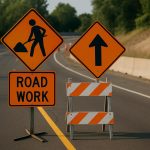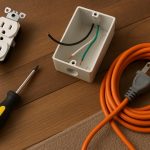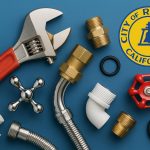Every time you get behind the wheel, you’re entering a constantly shifting landscape of decisions, distractions, and potential dangers. While most drivers are cautious, not all areas of the road are created equal. Expert Clearwater accident attorneys warn that some zones carry a far higher risk of accidents due to unpredictable behavior, limited visibility, or rapidly changing conditions. These “problem zones”—intersections, highway exits, school zones, and construction areas—require heightened awareness and quick reflexes. Understanding why these areas are so hazardous can help you stay one step ahead and protect yourself, your passengers, and everyone else on the road.
Intersections: Where Paths—and Risks—Cross
Intersections may look routine, but they are among the most dangerous places on the road. According to the Federal Highway Administration, nearly half of all traffic accidents occur at intersections. Why? Because this is where traffic from different directions converges, the potential for human error increases significantly. Drivers may misjudge gaps in traffic, run red lights, or fail to yield properly at intersections.
Even when you have the green light, it’s wise to pause briefly and look both ways before entering the intersection. Always watch for vehicles turning left across your path or pedestrians stepping into the crosswalk. If the intersection is uncontrolled or has a malfunctioning traffic signal, treat it as a four-way stop, and never assume other drivers will follow the rules.
Highway Exits: Fast Decisions, High Stakes
Highway exits are a recipe for confusion and split-second decisions. Drivers may suddenly realize they’re about to miss an exit and make dangerous last-minute lane changes. At the same time, merging traffic from an entrance ramp can cause congestion and unexpected slowdowns.
These areas become especially risky when visibility is low or signage is unclear. Slow down as you approach your exit, use your signal early, and check your mirrors and blind spots thoroughly before making a move. If you miss your exit, don’t panic or try to reverse—continue to the next one and adjust your route safely.
School Zones: Children, Chaos, and Caution
School zones may seem calm, but they’re filled with unpredictability. Children don’t always look both ways, and their behavior can be impulsive. Add in distracted parents dropping off students, buses stopping unexpectedly, and changing school schedules, and you have a zone full of potential hazards.
Always obey reduced speed limits in school zones and be extra cautious around crosswalks and sidewalks. Watch for flashing lights indicating bus stops, and remember that it’s illegal in many states to pass a stopped school bus while children are boarding or exiting. The few seconds you save by rushing through a school zone aren’t worth risking a life—or facing serious legal consequences.
Construction Areas: Expect the Unexpected
Construction zones often feature reduced lanes, unclear signage, abrupt detours, and workers or heavy equipment positioned close to traffic. These constantly changing conditions make it difficult for even experienced drivers to navigate safely. Speeding, tailgating, or ignoring warning signs can quickly lead to a serious accident.
Obey posted speed limits, which are often much lower in construction zones. Stay alert for flaggers directing traffic and be prepared for sudden stops or lane shifts. Keep a safe distance from both workers and other vehicles. Many states enforce double fines for speeding in construction zones, making reckless driving not only dangerous but costly.
Your Legal Safety Net
No matter how cautious you are, accidents can still happen, especially in these high-risk zones. Other drivers’ negligence, poor signage, or even city planning flaws may contribute to an incident. If you’re involved in a crash in one of these areas, the legal complexities can be overwhelming.
Understanding your rights and responsibilities after an accident is crucial, particularly when multiple parties or local regulations are involved. A knowledgeable personal injury attorney can help determine liability, deal with insurance companies, and ensure you receive fair compensation.
Conclusion
Driving may feel routine, but the road is anything but predictable, especially in high-risk areas like intersections, highway exits, school zones, and construction zones. By recognizing these high-risk areas and adjusting your behavior accordingly, you can significantly reduce your chances of being involved in a crash. If you or someone you love has been injured in one of these zones, don’t navigate the legal road alone. Contact experienced Clearwater accident attorneys today to protect your rights and get the support you need.
Lynn Martelli is an editor at Readability. She received her MFA in Creative Writing from Antioch University and has worked as an editor for over 10 years. Lynn has edited a wide variety of books, including fiction, non-fiction, memoirs, and more. In her free time, Lynn enjoys reading, writing, and spending time with her family and friends.















